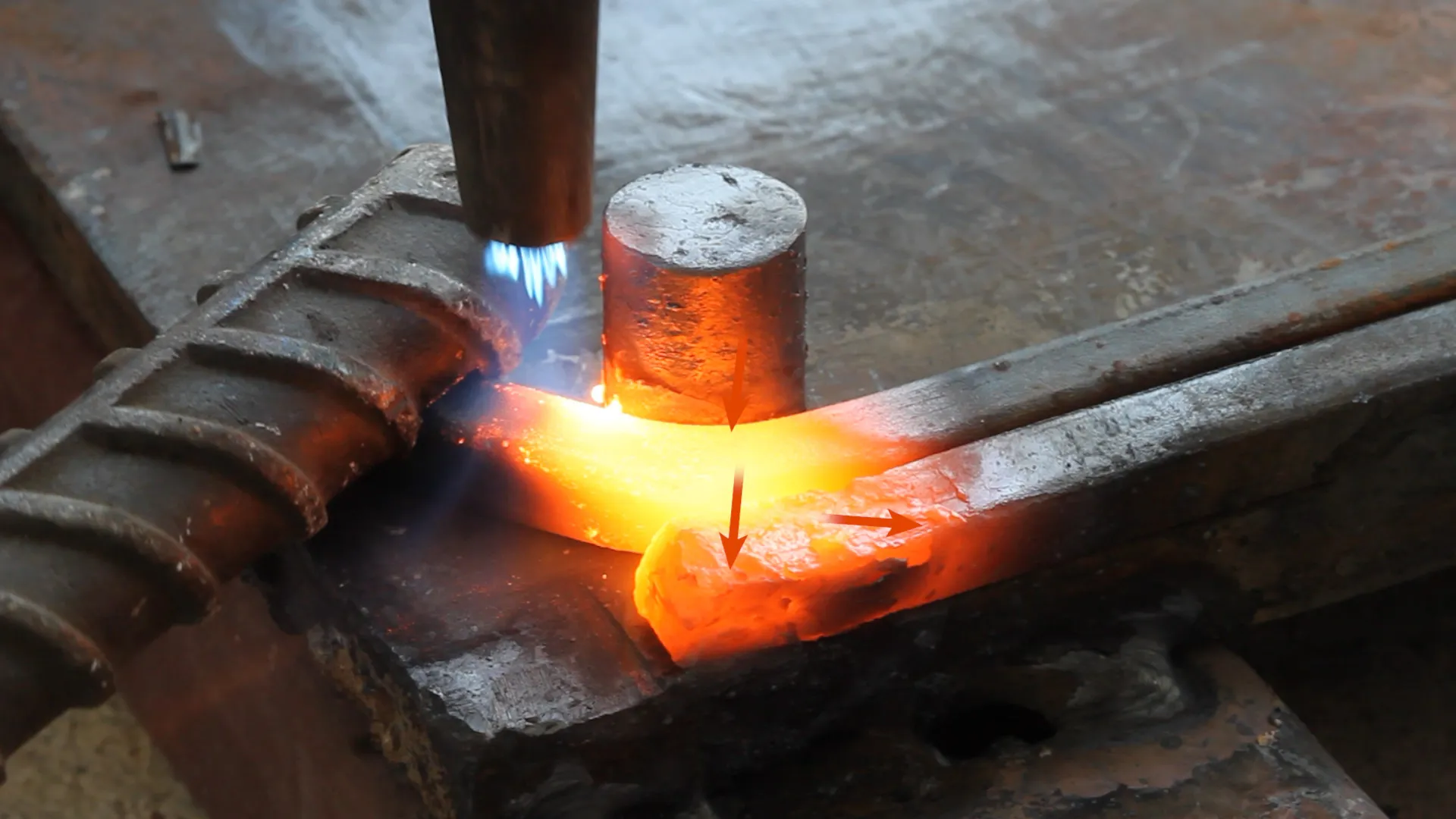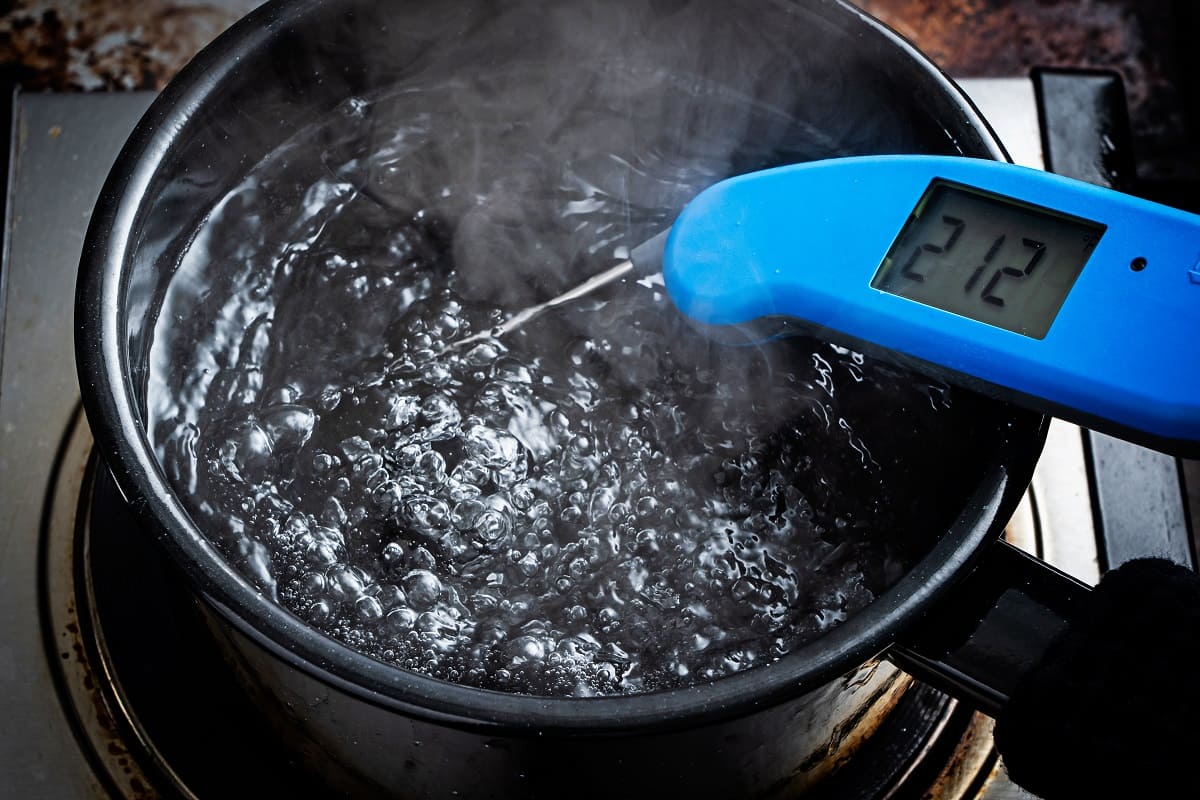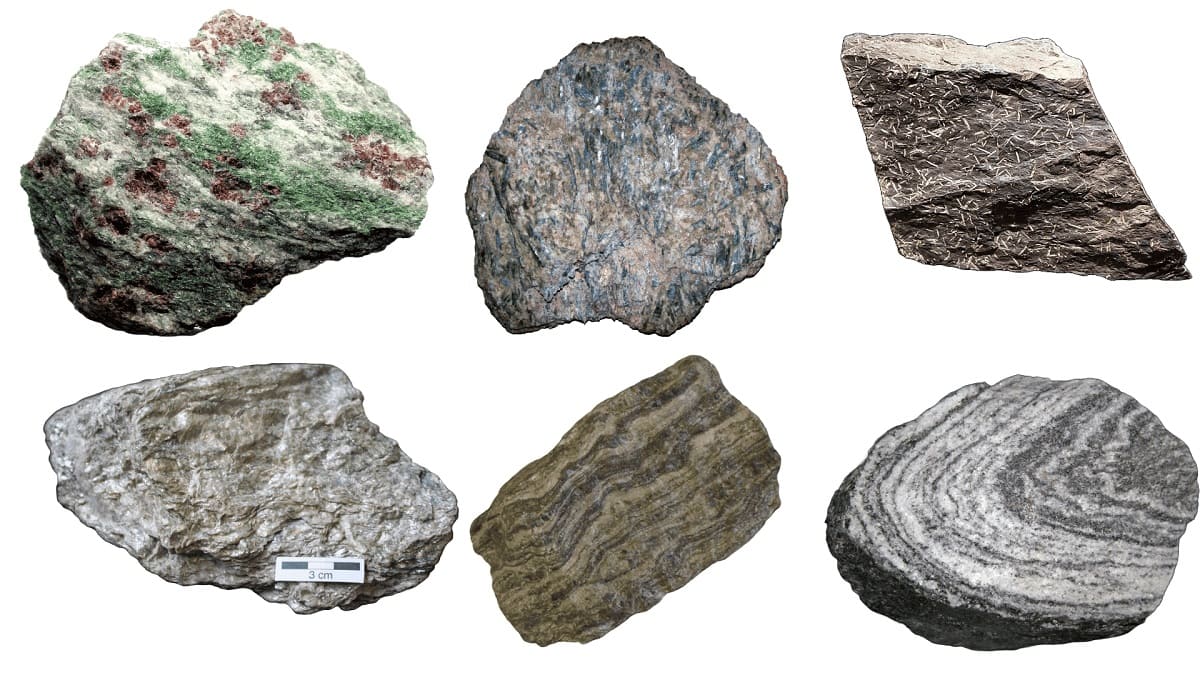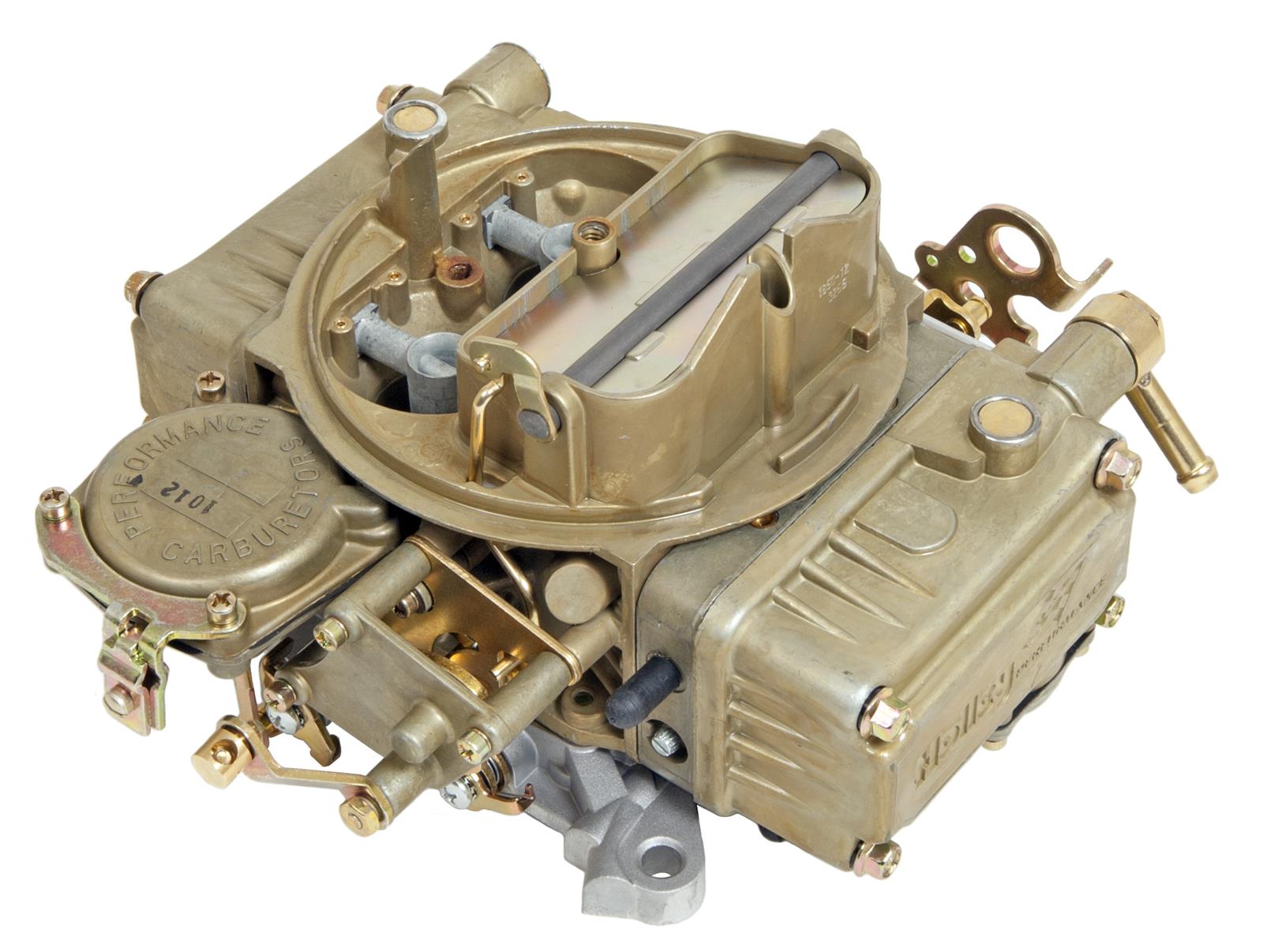Home>Science & Environment>Different Types Of Heat Transfer


Science & Environment
Different Types Of Heat Transfer
Published: February 19, 2024
Explore the various methods of heat transfer in the field of science and environment. Learn about conduction, convection, and radiation in this comprehensive guide.
(Many of the links in this article redirect to a specific reviewed product. Your purchase of these products through affiliate links helps to generate commission for Temperatures.com, at no extra cost. Learn more)
Table of Contents
Introduction
Heat transfer is a fundamental process that plays a crucial role in various aspects of our lives, from the functioning of electronic devices to the natural phenomena that shape our environment. Understanding the different types of heat transfer is essential for comprehending the mechanisms behind these processes and their applications in engineering, science, and everyday life.
The study of heat transfer revolves around the exploration of how thermal energy moves from one object to another. This movement occurs through three primary mechanisms: conduction, convection, and radiation. Each of these mechanisms operates differently and has distinct characteristics that influence their applications and significance in different scenarios.
By delving into the intricacies of heat transfer, we gain insights into the behavior of materials under varying temperature conditions and the ways in which heat energy can be harnessed or dissipated. This knowledge forms the foundation for innovations in fields such as thermodynamics, materials science, and environmental engineering, enabling the development of efficient heating and cooling systems, sustainable energy solutions, and advancements in industrial processes.
As we embark on an exploration of the different types of heat transfer, we will uncover the underlying principles that govern these processes and their far-reaching implications. From the microscopic interactions between particles in a solid to the macroscopic heat exchange phenomena in natural and artificial systems, the study of heat transfer offers a fascinating journey into the heart of thermal dynamics and its profound impact on the world around us.
Conduction
Conduction is a fundamental mode of heat transfer that occurs through direct physical contact between materials. In this process, thermal energy is transmitted from the hotter end of an object to the cooler end, leading to a redistribution of heat within the material. The mechanism of conduction relies on the transfer of kinetic energy between adjacent particles, such as atoms or molecules, through collisions and interactions.
At the microscopic level, the particles within a material are in constant motion due to their thermal energy. When one region of the material is heated, the particles in that area gain kinetic energy and vibrate more vigorously. As these energized particles collide with neighboring particles, they transfer some of their kinetic energy, thereby raising the temperature of the adjacent particles. This chain reaction of energy transfer continues throughout the material, resulting in the propagation of heat.
The rate of conduction within a material is influenced by several factors, including the thermal conductivity of the material, the temperature gradient across the material, and the cross-sectional area through which heat is transferred. Materials with high thermal conductivity, such as metals, facilitate efficient conduction due to their ability to rapidly transmit thermal energy. Conversely, materials with low thermal conductivity, such as insulators, impede the flow of heat through their structure.
Conduction plays a pivotal role in various practical applications, ranging from the efficient operation of electronic devices to the design of thermal insulation. For instance, in electronic circuits, conduction enables the dissipation of heat generated by components, ensuring that the devices operate within safe temperature limits. In the context of thermal insulation, materials with low thermal conductivity, such as fiberglass or foam, are utilized to minimize heat transfer and maintain comfortable indoor temperatures.
Understanding the principles of conduction is essential for optimizing the performance of heat exchangers, designing effective cooling systems, and developing advanced materials with tailored thermal properties. By harnessing the mechanisms of conduction, engineers and scientists can innovate in areas such as sustainable energy technologies, thermal management solutions, and the enhancement of industrial processes.
In summary, conduction serves as a cornerstone in the study of heat transfer, offering valuable insights into the behavior of materials and the mechanisms through which thermal energy is propagated. Its pervasive influence extends from the microscopic realm of particle interactions to the macroscopic realm of practical applications, shaping the way we approach thermal dynamics and engineering solutions.
Convection
Convection is a dynamic mode of heat transfer that involves the movement of fluids, such as liquids and gases, to distribute thermal energy. Unlike conduction, which relies on direct contact between materials, convection relies on the bulk motion of the fluid itself to carry heat from one place to another. This process occurs naturally in the Earth's atmosphere, oceans, and the interiors of stars, as well as in engineered systems such as heating, ventilation, and air conditioning (HVAC) systems.
The fundamental principle driving convection is the transfer of heat through the movement of fluid particles. When a fluid is heated, its particles gain kinetic energy and become less dense, causing them to rise. As the heated fluid rises, it displaces cooler, denser fluid, which then moves to take its place. This creates a continuous circulation pattern known as a convection current. In the context of natural convection, these currents can be observed in phenomena such as the rising of warm air and the sinking of cooler air, driving atmospheric circulation and influencing weather patterns.
In addition to natural convection, forced convection occurs when an external force, such as a fan or a pump, is used to propel the fluid and enhance heat transfer. This mechanism is commonly employed in HVAC systems, where fans are utilized to circulate air and facilitate the exchange of thermal energy, thereby regulating indoor temperatures and improving air quality.
The significance of convection extends beyond atmospheric and environmental processes, permeating various engineering applications. In the realm of thermal management, convection plays a critical role in the design of heat exchangers, cooling systems, and aerospace technologies. By leveraging the principles of convection, engineers can optimize the dissipation of heat from electronic components, enhance the efficiency of power generation systems, and improve the thermal performance of vehicles and aircraft.
Furthermore, convection contributes to the transport of heat in natural bodies of water, influencing aquatic ecosystems and the distribution of thermal energy in oceans and lakes. This natural heat transfer process has implications for climate dynamics, marine life, and the Earth's overall energy balance.
In summary, convection embodies the dynamic interplay between fluid motion and heat transfer, shaping the behavior of natural systems and driving technological advancements in diverse fields. By unraveling the complexities of convection, scientists and engineers continue to unlock new possibilities for sustainable energy solutions, environmental stewardship, and the optimization of thermal processes.
Radiation
Radiation is a fundamental mode of heat transfer that occurs through electromagnetic waves, without the need for a material medium. Unlike conduction and convection, which rely on the physical interaction of particles or the movement of fluids, radiation enables heat to be transferred through empty space or across transparent mediums. This mechanism is governed by the fundamental principles of electromagnetic radiation, encompassing a broad spectrum of wavelengths, from radio waves to gamma rays.
At the core of radiation-based heat transfer is the emission and absorption of electromagnetic waves by objects and surfaces. When an object is heated, it emits thermal radiation in the form of electromagnetic waves, with the intensity and spectrum of the radiation determined by the object's temperature and emissivity. This emitted radiation can then be absorbed by other objects or surfaces, leading to an increase in their thermal energy.
The process of radiation plays a pivotal role in various natural and engineered systems. In the context of natural phenomena, radiation from the sun provides the Earth with the majority of its energy, driving weather patterns, sustaining ecosystems, and influencing global climate dynamics. Additionally, the Earth's emission of thermal radiation into space during the night contributes to cooling processes and the regulation of the planet's overall temperature.
In engineering and technology, radiation-based heat transfer is harnessed in a multitude of applications, ranging from solar energy harvesting to the design of thermal imaging systems. Solar panels utilize the absorption of solar radiation to generate electricity, while thermal imaging devices detect and visualize the infrared radiation emitted by objects, enabling applications in fields such as surveillance, medical diagnostics, and industrial inspections.
Moreover, radiation plays a crucial role in the thermal management of spacecraft, where the dissipation of heat in the vacuum of space relies on the principles of radiative heat transfer. By leveraging the unique characteristics of radiation, engineers can develop innovative solutions for spacecraft thermal control, ensuring the efficient operation and longevity of space missions.
In summary, radiation represents a distinctive mode of heat transfer that transcends the constraints of material interactions and fluid motion, offering a versatile and powerful mechanism for the exchange of thermal energy. Its pervasive influence spans the realms of natural phenomena, technological innovation, and space exploration, shaping our understanding of heat transfer and inspiring advancements in diverse fields.
Heat Transfer in Engineering Applications
Heat transfer principles form the backbone of numerous engineering applications, playing a pivotal role in the design, operation, and optimization of a wide array of systems and technologies. In the realm of thermal management, heat exchangers stand as a testament to the practical application of heat transfer concepts. These devices facilitate the efficient exchange of thermal energy between fluids, enabling the regulation of temperatures in industrial processes, HVAC systems, and power generation facilities. By harnessing the mechanisms of conduction and convection, heat exchangers contribute to the enhancement of energy efficiency and the mitigation of thermal stresses in diverse engineering domains.
Furthermore, the field of aerospace engineering relies heavily on heat transfer principles to address the thermal challenges associated with space exploration and aircraft design. From the development of advanced thermal protection systems for spacecraft re-entry to the optimization of cooling mechanisms in jet engines, engineers leverage the fundamentals of radiation, conduction, and convection to ensure the safe and efficient operation of aerospace technologies. The intricate interplay between heat transfer and aerodynamics shapes the performance and durability of aircraft and spacecraft, underscoring the critical role of thermal management in aerospace engineering.
In the domain of sustainable energy, heat transfer concepts drive innovations in renewable energy technologies, such as solar thermal systems and geothermal energy extraction. By harnessing the principles of radiation and conduction, engineers can design solar collectors that efficiently capture and convert solar energy into heat, which can then be utilized for electricity generation or heating applications. Similarly, the utilization of geothermal heat pumps capitalizes on the natural conduction of heat from the Earth's interior to provide sustainable heating and cooling solutions for residential and commercial buildings.
Moreover, the advancement of electronic devices and semiconductor technologies relies on effective heat transfer mechanisms to mitigate thermal issues and enhance performance. Through the application of thermal interface materials and innovative cooling solutions, engineers strive to optimize the conduction and convection of heat within electronic components, ensuring reliable operation and longevity. The integration of heat transfer principles into the design and manufacturing of electronic systems underscores the indispensable role of thermal management in the evolution of modern technology.
In essence, heat transfer principles permeate the fabric of engineering applications, driving advancements in energy efficiency, environmental sustainability, and technological innovation. By embracing the intricacies of heat transfer, engineers continue to push the boundaries of possibility, shaping the future of engineering with solutions that harness the fundamental principles of thermal dynamics.
Heat Transfer in Everyday Life
Heat transfer is intricately woven into the fabric of our daily experiences, influencing the way we interact with our surroundings and the technologies we rely on. From the warmth of sunlight on a clear day to the comforting embrace of a hot beverage, heat transfer manifests in myriad forms, shaping the rhythms of everyday life.
In the realm of domestic comfort, the principles of heat transfer govern the efficacy of heating and cooling systems within our homes. During the cold winter months, conduction and convection play a pivotal role in distributing warmth from radiators or heating vents, ensuring that indoor spaces remain cozy and habitable. Conversely, in the sweltering heat of summer, the principles of convection and radiation come into play as air conditioners and fans expel excess heat, creating a cool and refreshing environment.
The culinary domain offers a rich tapestry of heat transfer phenomena, from the sizzle of food on a hot pan to the gentle simmer of a stew. Conduction enables the even distribution of heat within cookware, ensuring that ingredients are cooked to perfection, while convection drives the circulation of air within ovens, facilitating the baking and roasting of delectable dishes. Furthermore, the radiant heat from grills and open flames imparts a distinct flavor to grilled delicacies, showcasing the interplay of radiation in culinary arts.
In the realm of personal care, heat transfer principles underpin the functionality of various grooming and wellness devices. Hair dryers utilize convection to expel warm air, hastening the drying process, while curling irons and straighteners harness conduction to style hair with precision. Moreover, the soothing warmth of heating pads and hot water bottles provides relief from muscular tension, exemplifying the therapeutic applications of conduction-based heat transfer.
Beyond the confines of our immediate surroundings, heat transfer influences our interactions with transportation systems and recreational activities. The efficient dissipation of heat in vehicle engines relies on convection and radiation, enabling smooth and reliable journeys. Additionally, outdoor pursuits such as camping and barbecuing showcase the natural convection of air and the radiant heat of campfires, fostering memorable experiences in the great outdoors.
In essence, heat transfer permeates the tapestry of everyday life, enriching our experiences and underpinning the functionality of the technologies and comforts we cherish. By recognizing the subtle manifestations of heat transfer in our daily routines, we gain a deeper appreciation for the profound impact of thermal dynamics on the human experience.
Conclusion
In conclusion, the exploration of the different types of heat transfer unveils a captivating tapestry of natural phenomena, engineering marvels, and everyday experiences that are intricately intertwined with the principles of thermal dynamics. From the microscopic realm of particle interactions to the macroscopic scale of environmental processes, heat transfer manifests in diverse forms, shaping the world around us in profound ways.
The fundamental mechanisms of conduction, convection, and radiation serve as the pillars of heat transfer, each offering unique insights into the propagation of thermal energy and its applications across various domains. Conduction, driven by the direct collision of particles, governs the thermal behavior of materials and underpins the design of efficient electronic devices, insulation systems, and heat exchangers. Convection, characterized by the dynamic movement of fluids, influences atmospheric circulation, thermal management technologies, and the transport of heat in natural bodies of water. Radiation, operating through electromagnetic waves, powers solar energy systems, thermal imaging technologies, and the thermal regulation of spacecraft in the vacuum of space.
The significance of heat transfer extends far beyond the realms of science and engineering, permeating the fabric of everyday life. From the comfort of heated spaces to the pleasures of culinary arts and personal care, heat transfer shapes our domestic comforts and leisure activities. Moreover, the principles of heat transfer drive the functionality of transportation systems, recreational pursuits, and wellness devices, enriching our experiences and interactions with the world.
In the domain of engineering, heat transfer principles underpin a myriad of applications, from thermal management systems and aerospace technologies to renewable energy solutions and electronic device design. The seamless integration of heat transfer concepts into engineering endeavors continues to drive innovations in energy efficiency, environmental sustainability, and technological advancements, shaping the trajectory of human progress.
As we reflect on the multifaceted manifestations of heat transfer, we gain a deeper appreciation for the intricate interplay of thermal dynamics in the natural world and human endeavors. The study of heat transfer not only unlocks the mysteries of thermal energy propagation but also inspires a sense of wonder at the elegant mechanisms that govern our physical reality. By embracing the complexities of heat transfer, we embark on a journey of discovery that transcends disciplinary boundaries, offering insights that resonate across scientific, technological, and everyday contexts.














